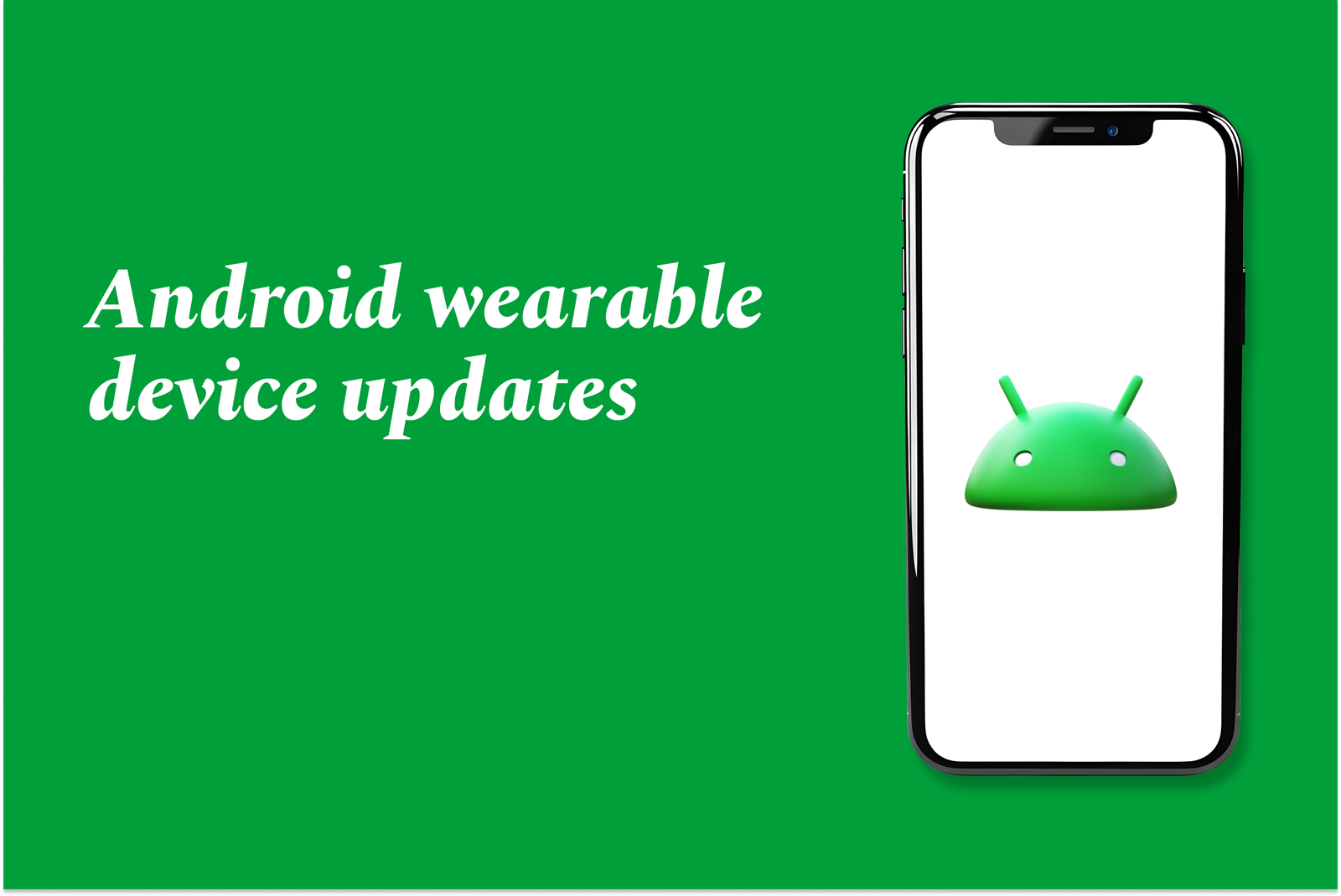Android Wearable Device Updates
Android wearable device updates improve smartwatch functionality, enhance app integration, boost health and fitness features, and fix bugs. These updates ensure smoother performance, better connectivity, and increased security, keeping wearable devices in sync with the latest Android and Wear OS advancements.
Android wearable device updates
1 ) Wear OS by Google Enhancements
Wear OS seamlessly connects users to health, communication, and apps from their wrist.
Key Google apps available on Wear OS include Gmail, Google Calendar, Google Maps, Google Assistant, YouTube Music, and Google Home.
These apps enable users to manage emails, schedules, navigation, voice commands, music, and smart home controls directly from their smartwatch.
2 ) Health and Wellness Features
Wear OS integrates wellness and fitness apps like MyFitnessPal, empowering users to track meals, habits, and fitness goals.
The platform aims to optimize workouts and overall wellness by leveraging a broad suite of health focused applications.
3 ) Samsung Galaxy Wearable App Overview
The Galaxy Wearable app connects Samsung wearable devices to mobile phones for managing device settings, software updates, apps, notifications, and finding the watch.
It requires stable Bluetooth connectivity between mobile and wearable devices to function properly.
The app supports various access permissions for features like location, calendar syncing, call and SMS log syncing.
It does not support Gear VR or Gear 360 and has limited support for tablets.
4 ) User Experience and Issues
Some users report difficulties with the Galaxy Wearable app, such as bugs, UI glitches after updates, and issues connecting older Galaxy Watch models to new phones.
A notable complaint is the forced deletion of watch data when pairing with a new phone, causing potential data loss.
Performance issues like failure to load settings and delayed face changes have been reported post updates.
5 ) Developer and Security Notes
Google and Samsung regularly update wearable device software to enhance functionality and security.
Data privacy safeguards include encrypted transit and restricted data sharing, striving to protect user information.
Updates improve device compatibility, app performance, and introduce new features across Android and Wear OS platforms.
Summary:
Android wearable devices, especially those running Wear OS, continue to receive updates enhancing app integration, wellness features, and user connectivity. While Wear OS provides a rich ecosystem of Google apps for on wrist productivity and health management, Samsung's Galaxy Wearable app manages device pairing and settings but is facing user criticism for bugs and connectivity issues with recent updates. Ongoing updates aim to improve stability, security, and user experience across Android wearable devices.
https://justacademy.in/news-detail/android-malware-protection-improvements
https://justacademy.in/news-detail/flutter-community-meetups-in-2025
https://justacademy.in/news-detail/flutter-theme-extensions-in-latest-version
https://justacademy.in/news-detail/breaking-changes-in-latest-flutter-version
https://justacademy.in/news-detail/flutter-for-embedded-systems-2025
Related Posts
Java supports GDPR and data privacy by enabling secure data handling through encryption, controlled access, and precise data management. It allows developers to minimize PII exposure, ensure data confidentiality, and design workflows that comply with data protection regulations effectively.
Java code quality tools have evolved to include advanced static analysis, integrated security checks, and AI-powered code reviews. These updates help developers detect bugs, enforce coding standards, and enhance security, streamlining the development process and improving overall code reliability.
Java remains a cornerstone in big tech companies, evolving with modern features like records, pattern matching, and virtual threads. Its robust ecosystem, enhanced performance, and growing AI integrations keep it vital for both legacy systems and innovative new projects.
Java and CI/CD pipeline optimizations streamline Java application development by automating builds, tests, and deployments. They improve efficiency through parallelization, caching, and secure secrets management, enabling faster feedback loops and more reliable, scalable software delivery.
Java supports modern cryptography standards through its flexible Java Cryptography Architecture (JCA), enabling integration of advanced algorithms like AES, EdDSA, and post-quantum tools. Libraries like Bouncy Castle offer FIPS-certified, hardware-accelerated implementations for secure development.
Java 23 enhances record patterns by enabling concise, direct destructuring of record components within pattern matching, simplifying type checks and data extraction. This improvement boosts code readability and expressiveness by reducing boilerplate in handling immutable data classes.
Java remains a top choice for mobile app backends, powering scalable, secure, and high-performance server-side solutions. Latest trends include cloud-native microservices, reactive programming, and enhanced JVM optimizations, enabling efficient, flexible, and robust mobile backend development.
Java SE 24 and LTS Java SE 21 offer enhanced features and performance, while Apache Spark 4.0.0 introduces Scala 2.13 support and advanced ML and SQL capabilities. Together, they empower developers to build scalable, high-performance data applications with modern tools.
JUnit 5 modernizes Java testing with a modular architecture, improved assertions, and seamless Java 8+ support. Beyond JUnit, tools like Mockito and AssertJ enhance mocking and assertions, creating a powerful, flexible ecosystem for writing clean, efficient Java unit tests.
Java plays a pivotal role in cloud automation tools by providing a robust, platform-independent language used to build scalable automation frameworks like Jenkins and Selenium, enabling efficient CI/CD pipelines, testing, and orchestration across diverse cloud environments.










